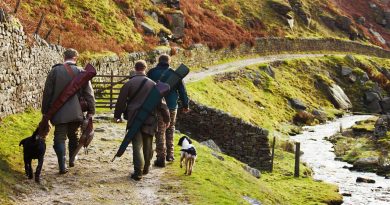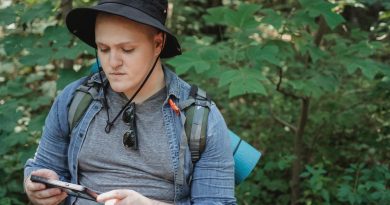How to Navigate in the Woods – Going Back to the Roots
Nowadays, camping and hiking are not only about physical resistance or natural skills. Instead, it is about many people using their last technological devices. They use it to get oriented and remain safe and comfortable during the experience. However, many people still recognize the benefits of taking a natural approach to overcome the experience. After all, that is how our ancestors did it and became stronger. So, there is no doubt that anybody can do it that way. So, how do you get back to the roots of navigating in the woods? Here are the basics.
The right tool for the right navigation job
Although you are not supposed to use tech devices, it is important that you still can rely on some tools to help you navigate safely. They include a compass and a topographical map. These are ancient tools that represented a technological revolution at their time. However, they are easy to use and still very trustable. For each one of them, you must consider some special features and ways to leverage their use as follows.
Compass
An initial look can make you think of a compass as a rudimentary tool. However, its construction is very delicate and sophisticated. Although models with floating needles don´t require modern batteries to operate, its good maintenance is essential to assure that it works properly.
Firstly, you need to keep it clean and free of cracks before you use it. This is how you guarantee accurate readings. Also, you must prevent the accumulation of dirt to avoid difficulties in the rotation or movement of the pieces. Finally, you must store it in places with stable temperatures. If the temperature is constantly varying, the materials can get broken and allow air and fluids to enter the piece.
Maps
Topo maps are a fantastic source of knowledge you can check before you arrive in the woods. Then, when you face the area, you will be familiar with many of the features of the terrain. Nowadays, you can obtain them from many different sources such as government offices, online stores ready for print, and similar.
To use it during your trip, you can cover it up with plastic to protect it against weather conditions. To take the biggest advantage of topo maps, it is convenient that you understand the meaning of all its signs. Fortunately, there is a wide source of information to explain it but the basic aspects include the following:
- Contour lines that stand for different elevations of the terrain
- Different colors for different types of terrains like water reservoirs, man-made areas, or roads. Usually, there are brown, blue, and black colors with different levels of intensity.
- The scale of preparation of the map. By the time that topo maps were created, they commonly used the scale ratio 1:24,000. In other words, every inch of the map is the equivalent of 24,000 inches in the terrain.
Joining forces with a map and a compass
Using topo maps and a compass is a fantastic source of orientation. To use them, you only need to find a landmark on the map and start using the compass from there.
How to never get lost in the Woods
Long before any tool was invented, the sun, the moon, and the stars were the main reference to navigate. However, they are still very effective but require that you know their principles. The best thing about these methods is that they are always available. You don’t have to wait to get lost to use some of them. But you can use them to recover your track if you lose your way.
The sun and the shadows
The sun and its movements are full of quirks. However, it is still an excellent source of orientation. If you get to know its movements and how it behaves during specific times of the year, you can get the best of it. First of all, you need to find information about the specific time of the year that you plan your trip to the woods. That will give you a huge advantage.
Although the sun rises in the east and then it sets on the west side, the time of the year is crucial to determine some variations. Also, consider that it may also vary according to the hemisphere where you are. For instance, in the Southern hemisphere, the sun rises in the north.
Hence, it changes the lecture you make of it. Fortunately, by using the shadows, you can overcome these variations. To do so, you can use the stick method which consists of sticking a stick on the ground fully exposed to the sun. Then mark the first shadow you observe to find the west.
After letting go some minutes, take a second reading by marking the shadow again and you will get the east. With this information, you can draw a line between the east/west sides and determine the north and south. The main obstacle you can face is the lack of sun because the success of the method is guaranteed!
Embrace the moon
There are different formulas to use the moon as a guide and orientation. The first one is known as the crescent method. It consists of creating an imaginary line that connects the .extremes of a crescent moon. Then you extend the line down toward the horizon. The result will give you the location of the south and from there you calculate the north, east, and west.
Another formula consists of making shadow tips by using any moon and using its bright to cast shadows. The resulting curve will demonstrate the shortest shadow that represents the north-south line.
Stare at the stars
The stars are a very trustable way to get oriented. In fact, they were among the first methods to do it. They never change. Depending on the hemisphere where you are, you can opt for finding the north or the south. IT is about finding specific stars and constellations. For instance, if you are in the northern hemisphere, you should try to find the Polaris. But if you are in the southern hemisphere you can opt for finding the Alpha Centauri. In any of those cases, they will give you a basic orientation about the location of cardinal points. Although it might look easy to spot the stars, you need to prepare yourself to recognize them. Hence, you would do good in learning about their position in the sky. Lucky for you, there many constellations and stars. Due to that, poor visibility affecting some stars may still let you see other stars and constellations.
Finding your way back if you get lost
Despite all your efforts, you still can get lost. Hence, you need a plan for those scenarios. To protect yourself, you can start by marking the key areas where you go. They will leave a trace in case you need it. Hence, in case you get lost, you will have a sort of basic orientation. To do so, you can use little ribbons, markers, and similar.
Besides, you can gather some supplies to use in case you get lost. That would include some water, snacks, matches, a first aid kit, a sharp knife, a whistle, and similar. Also, any other supply that may help you spend some time while you are stuck.
Regarding your behavior, you must learn to deal with the stress of getting lost. To do so, you can calm down and keep a positive mind. Also, try to create a warm environment with a campfire. It will let you keep your energy and remain safe. Finally, if you want to increase the chances to be found, you can take the following actions:
- Use the whistle. Do it periodically by getting some rest and then continuing
- Use a reflective mirror against the sun to create a bright signal
- Find the closest place to the last area where you stayed. It will be easier to spot you if were seen there
- Although your cell phone has no signal, try to send some text messages to get ahead of some intermittent signal access
- Consume just what you need of water and other supplies as you don´t know how much time you will be lost
- If you opt for walking away try to follow the water because people tend to gather around water supplies. There are more chances to find people close to those areas.
Final words
When you opt for navigating in the woods using basic tools and methods, you also opt for connecting to nature. The best part of this experience is that you will realize how generous it is. Also, it will help you grow and develop your sense of independence and trust toward nature. Going back to the roots is also an optimal way to learn about your skills and how to take a step further. The key is preparation. It is never too much to learn about the woods, the sun, the moon, and the stars.




